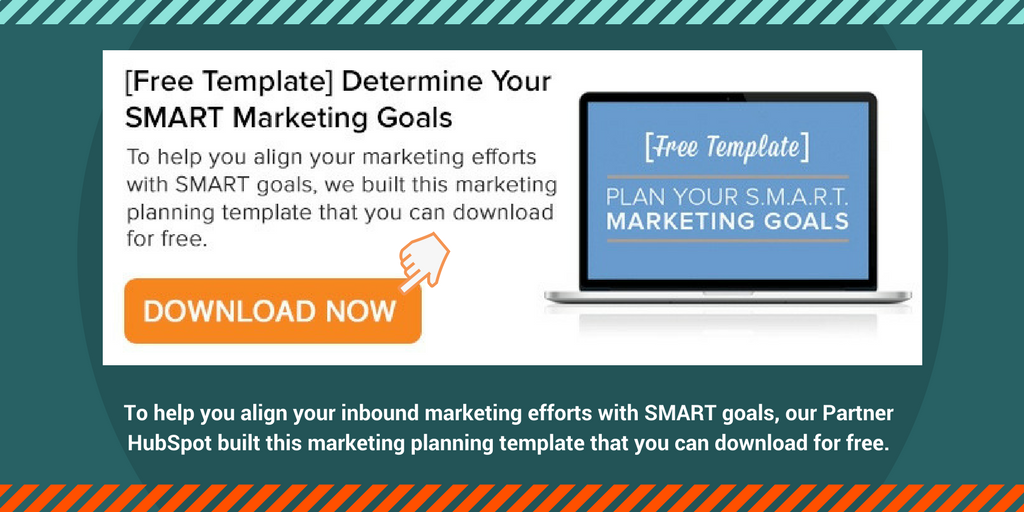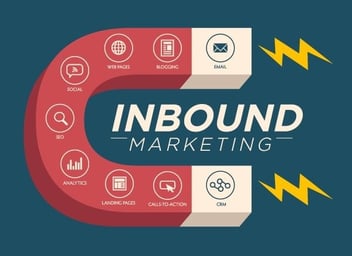If Inbound Marketing is responsible for convincing Americans to buy small plastic parts made by American companies in America, as opposed to the popularly held view that everything plastic is made in China then surely getting your marketing campaigns past your CEO shouldn't be difficult, should it?
Unfortunately, for those tasked with Inbound Marketing, often the toughest sell is getting it past your own boss.
Having an Inbound Marketing campaign is a proven strategy for driving sales traffic, yet because results aren't always immediate, management is sometimes still reticent to commit to it.
It all boils down to fulfilling the all-important question - and directive of decision-makers - of 'what's my return on investment (ROI)?'. This is usually the first and last question they ask - and your success often hinges on your response.
Boosting your ROI means integrating the most effective marketing strategies for your campaigns, which just happen to be the main components of an Inbound Marketing strategy:
- Email Marketing
- Content Marketing
- Website Optimisation
- Search Engine Optimisation (SEO)
- Pay-Per-Click (PPC)
- Conversion Rate Optimisation (CRO)
If this isn't a compelling enough argument for management to buy into your Inbound Marketing campaign, we've got our argument prepped and ready to go.
1. Set Reasonable Expectations
The problem of buy-in partly lies in the belief that these tactics are difficult to implement, and require a lot of creative content.
Unclear timescales and unreasonable expectations will not help you prove that Inbound Marketing is going to work. Inbound Marketing campaigns require considerable planning and implementation in order to yield a justifiable ROI; this takes time. Do yourself a favour and set reasonable expectations that provide the time needed to generate leads and start channelling contacts down the sales funnel.
Key Point: Be strategic and give yourself time to gain traction.
2. Focus on Generating Leads & Increasing Sales
From the very first lead, make sure you're reporting on increased revenue at every chance you get. Generating a lead can seem a daunting task, but using the opportunity to nurture all contacts through the funnel will increase your chances drastically.
Setup your best performing website pages, landing pages, pillar pages, offer pages, blogs and any other popular resources for success. Capture prospects and nurture them into leads. You can do this through effective lead capture forms, popups, on-site tracking and more.
As more prospects sign up for offers and leave their contact information - you can keep track of them using tools like Google Analytics. This will help you track engagement of your content, the information you can arm yourself with when justifying your efforts to your boss.
It is also vital to track your numbers in order to prove the conversion of leads to customers. Having statistics linking strategy, content, lead capture and sales are very persuasive.
Key Point: Create a content plan that shows your customer journey enabling you to track and demonstrate success. Leads correlate with sales - and that's where the magic is.
3. It's not YOUR Inbound Campaign; it's the organisation's
Many hands make light work. While you may be leading the Inbound Marketing campaign, you'll need to strategically involve other staff to yield the best results. You will need to involve many people - ideally having multiple senior and decision-making people writing thought-leadership content as possible (because that's what your competitors are doing).
Even if you have to bullet point their views, it's worth having senior management's input. Once they see how their direct input plays a leading role in generating trackable sales, you'll have built a layer of trust in your campaign that can't easily be matched.
It's not just senior staff that need to be involved. Everyone has to play their part, especially your sales staff, who are the ones talking to your customers and able to ask them what content influenced their purchase.
Key Point: Look at your organisation holistically. Encourage buy-in from senior management, and align sales and marketing.
4. Use Sales Figures to Showcase ROI
Senior management will want to know your Inbound Marketing campaign's expected ROI before they commit. Inbound content is different; it isn't just another decision, it's a long-term commitment to long-term methodology. And predicting ROI is a gamble at best.
An organisation can't just dip its feet in the water of Inbound Marketing and expect to win proverbial gold. Inbound doesn’t produce impressive short-term results; it guarantees long-term profits.
The most practical way to predict ROI is by finding out which content is driving the most sales, quite simply by asking your sales team. These insights will demonstrate how Inbound Content influences the sales process - and how your future content plans will support sales growth.
Key Point: The most convincing argument is usually ROI.
5. Commit Time Where it's Most Valuable
While ROI might be the most compelling argument for senior management, you need to make them understand you need them to commit some of their time if they want to see these results.
Create effective timescales to implement your Inbound Strategy, starting with quick wins where possible while working on long-term plans in tandem. Ensure all stakeholders are aware of their responsibilities in its success, but also factor in their ability to commit time to the project. Management won't want to feel like they are running the show, but will usually be happy to provide strategic input if it produces tangible results. Be methodical about what you need from management and other staff.
Key Point: Be methodical about what you need from management and other staff. Make their inputs count.
Your Inbound Marketing strategy is a no-brainer when you can demonstrate the way it enhances the bottom line - try this handy ROI calculator to see if it could benefit your marketing campaigns.
If you can demonstrate these benefits, backed up with the right numbers, it can help your Inbound Marketing campaigns get signed off quicker by your boss and encourage commitment from your organisation.






